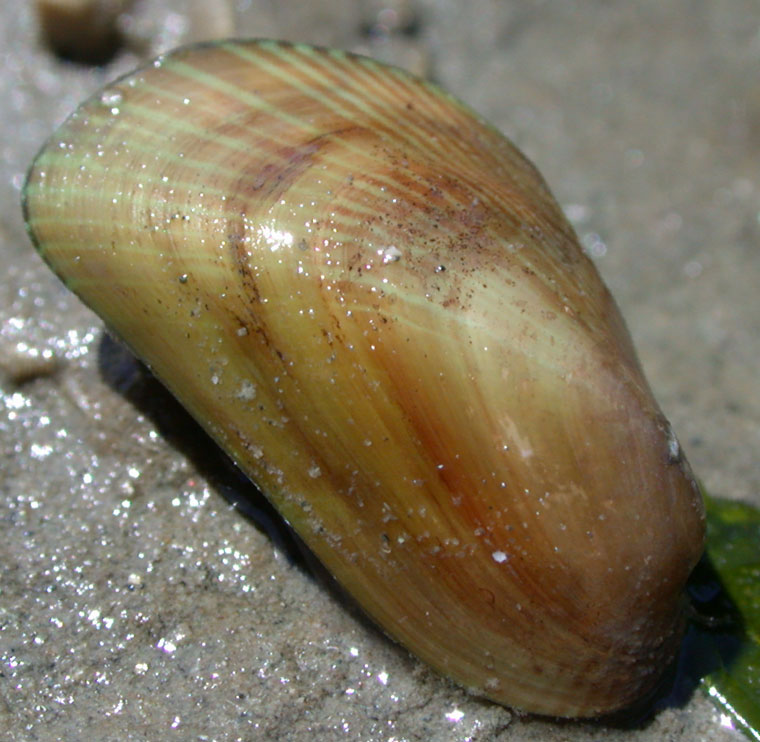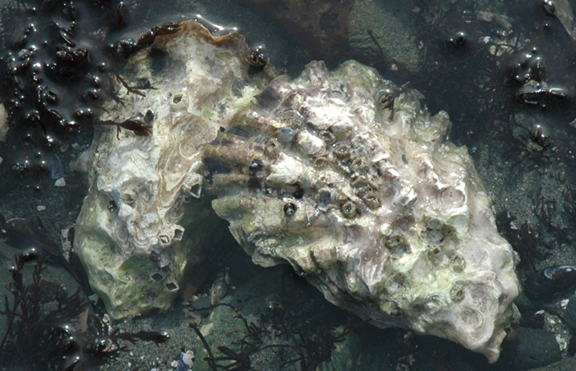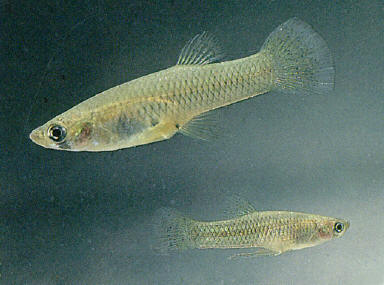INVASIVE SPECIES
Native plants can often support 10 to 50 times as many species of native wildlife as non-native plants.
– California Native Plant Society
Los Peñasquitos Lagoon and its watershed have been subjected to invasive species since European contact. Sediment cores taken from Los Peñasquitos Lagoon show traces of pollen from several Eroduim species (e.g. Mediterranean stork’s bill) that were most likely introduced during the earliest parts of Spanish colonization that began in the 1760s based on the absence of Erodium pollens in sediments that predate this era. Often imported as decorative plants, species like Erodium began to spread within the watershed most likely as a result of large-scale burning of native chaparral by ranchers trying to clear areas for cattle grazing. Unfortunately, the desire for decorative plants did not stop with early European settlers and continues today on both private property and along public roadways, often used to quickly cover areas of exposed dirt. Carried by storm runoff and other means (e.g. in the gut of mammals), invasive plant species established themselves in Los Peñasquitos Lagoon. Prior to the build out of the watershed, Los Peñasquitos Lagoon was historically hypersaline which most likely excluded many of the invasive species that currently inhabit the Lagoon. However, once the Lagoons’ tributaries began to flow year-round in 1995, salt tolerance was no longer a limiting factor for invasive plants becoming established in Los Peñasquitos Lagoon. Italian ryegrass (Festuca perennis) now dominates approximately 84 acres of Los Peñasquitos Lagoon that was previously non-tidal salt marsh. Other invasive grasses that have established themselves in Los Peñasquitos Lagoon include: ripgut grass (Bromus diandrus), soft chess (Bromus hordeaceus), and foxtail chess (Bromus madritensis ssp. rubens). While invasive plant species occur within the Lagoon’s tidal salt marsh habitat, generally there is a sharp gradient of invasive species increasing from tidal to non-tidally influenced habitats. Check out some of the invasive plant species that can be found in Los Peñasquitos Lagoon.
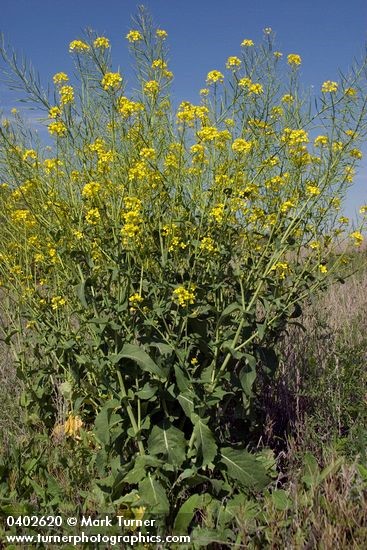
Common Name: Black mustard
Scientific Name: Brassica nigra
Status: Invasive
More Info

Common Name: Italian ryegrass
Scientific Name: Festuca perennis
Status: Invasive
More Info

Common Name: Curly Dock
Scientific Name: Rumex crispus
Status: Invasive
More Info

Common Name: Iceplant or Hottentot fig
Scientific Name: Carpobrotus edulis
Status: Invasive
More Info

Common Name: Brass buttons
Scientific Name: Cotula coronopifolia
Status: Invasive
More Info
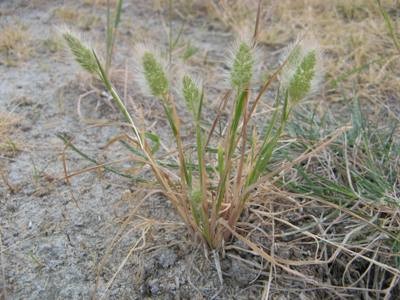
Common Name: Rabbitfoot grass
Scientific Name: Polypogon monspeliensis
Status: Invasive
More Info

Common Name: Wild radish
Scientific Name: Raphanus sativus
Status: Invasive
More Info
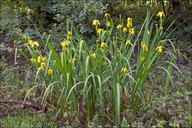
Common Name: Paleyellow iris
Scientific Name: Iris pseudacorus
Status: Invasive
More Info
Are all invasive species within Los Peñasquitos Lagoon considered exotic?
No, habitat conversion within Los Peñasquitos Lagoon also includes invasion by native plants that typically reside within the watershed or native freshwater habitats within the San Diego region. Changes in hydrology caused by the urbanization of the Los Peñasquitos Watershed have greatly altered the native landscapes of both the watershed and lagoon. Once confined to pockets along Los Peñasquitos Creek, riparian habitats have increased in density along all Lagoon tributaries and extended into Los Peñasquitos Lagoon in areas of historical non-tidal salt marsh. Quick to establish in areas of disturbance caused by rapid sedimentation, riparian corridors within Los Peñasquitos Lagoon and its watershed are now dominated by willows (Salix sp) transitioning to freshwater marsh dominated by dense areas cattails (Typha) in areas of standing freshwater that occur throughout the Lagoon’s eastern reaches. The rapid advance of willows and cattails have been documented in Los Peñasquitos Lagoon by aerial imagery, special studies, and annual vegetation monitoring efforts. In some areas, vegetation transects monitored within the Lagoon since the 1990s have been abandoned due to the presence of thick stands of cattail that have taken over areas of historical salt marsh habitat and transitional areas. While these recently established riparian corridors and freshwater marshes provide suitable habitat for some native species, they do not provide the same functional value and associated benefits as salt marsh. Check out the distribution of both native (cattail – Typha) and non-native (Italian ryegrass – Fescuta perennis) in the Lagoon’s transition zone.

Are all invasive species plants?
No, Los Peñasquitos Lagoon has also been invaded by non-native species of wildlife many of which are aquatic organisms that include: oriental shrimp (Palaemon macrodactylos), mosquitofish (Gambusia affinis), yellowfin goby (Acanthogobius flavimanus), Asian mussel (Musculista senhousei), and Pacific oyster (Crassostrea gigas). Check out these species below.
